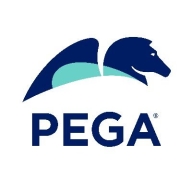


Find out what your peers are saying about Camunda, Automation Anywhere, Apache and others in Business Process Management (BPM).
AWS provides the best support, followed by Microsoft, and then Google.
They provide better support for the enterprise edition.
The customer service is outstanding.
On a scale from 1 to 10, support deserves a rating of 7 to 8.
We had a contract that provided on-site support, which was very satisfactory.
The technical support from Pega is very low, rating a one or two out of ten.
I never needed support from the platform standpoint, but if additional features are required, we have regular meetings with the product team for feedback.
Pega's technical support team is very helpful.
Camunda offers a high level of scalability, especially when using its SaaS model, which manages and scales implementations automatically.
It allows for easy scaling, especially with ECS service configurations.
The solution has scalability issues; on a scale, I would rate it at eight out of ten.
The architecture of the solution offers scalability; we can scale both vertically and horizontally.
I found IBM BPM to be scalable to a certain level but it struggled with large volumes of concurrent transactions.
Currently, big banking providers and insurance providers, even the members for healthcare payers, are using more than millions of operations on a daily or weekly basis.
There haven't been any significant outages in my experience with Camunda.
There is an issue where, in some situations, I need to scale up by observing both CPU and memory usage of containers, yet under the current options available at Amazon, this is not possible.
More open documentation would be beneficial to understand the deployment process better and facilitate easier setup.
IBM BPM also lacks smaller solutions, so I must purchase multiple solutions to start with workflows and applications.
Technologies evolve day by day, especially with the emergence of artificial intelligence and generative AI models.
With the recent development of AI agents in Pega Platform 24.2, the adoption is not heavy due to regulations around using external LLM by customers, especially regulated customers in BFSS and healthcare.
Pega introduced Constellation, which allows a user to build a more engaging visual experience.
My learning curve in robotics has been challenging.
AWS pricing is very competitive compared to Azure and cheap compared to Google.
There is a licensing cost for using the SaaS model and Enterprise edition of Camunda.
SAP is more expensive, but IBM BPM is very expensive.
The pricing is expensive, and this is an issue.
Pega is priced higher than open-source options like Flowable but is suitable for large-scale industries like banking and insurance.
From a licensing perspective, it is higher than the competition.
EC2 makes scaling horizontally incredibly easy, especially when working under the ECS service.
The biggest difference between Camunda and Bonita might be that Camunda is simpler and more flexible for setting.
The integration capabilities of IBM BPM are excellent.
Pega Platform is excellent for enterprise-level solutions with integrations to entire systems, including case management, service orchestration, CRM, decision-making capabilities, digital process automation, and AI-driven functionalities.
Management capabilities such as dashboards.
| Product | Market Share (%) |
|---|---|
| Camunda | 16.5% |
| Pega Platform | 5.2% |
| IBM BPM | 6.0% |
| Other | 72.3% |



| Company Size | Count |
|---|---|
| Small Business | 41 |
| Midsize Enterprise | 15 |
| Large Enterprise | 29 |
| Company Size | Count |
|---|---|
| Small Business | 30 |
| Midsize Enterprise | 19 |
| Large Enterprise | 71 |
| Company Size | Count |
|---|---|
| Small Business | 9 |
| Midsize Enterprise | 15 |
| Large Enterprise | 68 |
Camunda revolutionizes process orchestration by enabling seamless automation and integration with AI, human tasks, and existing systems while ensuring security and governance.
Built for collaboration between business and IT, Camunda empowers organizations to manage complexity, boost efficiency, and maintain competitive advantage. With a clientele of over 700 top organizations like Atlassian, ING, and Vodafone, Camunda is a trusted partner in designing, orchestrating, automating, and refining critical business processes to accelerate digital transformation. Its open-source nature, ease of use, and REST API integration make it a versatile choice for various needs.
What are Camunda's key features?In banking, Camunda automates processes and manages transactions, while in telecommunications, it optimizes service orders. Governmental and public sectors benefit from workflow automation. Organizations often use either the enterprise edition or the open-source version to create APIs and manage business rules effectively.
IBM BPM is a business process management tool that provides a robust set of tools to author, test, and deploy business processes, as well as full visibility and insight to managing those business processes. The solution provides tooling and run time for process design, execution, monitoring, and optimization, along with basic system integration support. To support various levels of complexity and involvement with business process management, there are two different editions of the product: IBM BPM and IBM BPM Express.
IBM BPM Features
IBM BPM has many valuable key features. Some of the most useful ones include:
IBM BPM Benefits
There are many benefits to implementing IBM BPM. Some of the biggest advantages the solution offers include:
Reviews from Real Users
IBM BPM is a solution that stands out when compared to many of its competitors. Some of its major advantages are that it’s good for developing complex apps, is robust, and has helpful team management and process performance features.
Zoran C., Owner/CEO at IT SPHERE, says, “It is perfect if you have to develop complex apps without much coding (only java script). It is also good if you don't have much IT resources in your company and would like to involve business analysts in the process of developing apps. My opinion is that it can do about 50% of all developers' work.”
Suhas V., BPM Architect at GBM, mentions, “Overall the solution is robust and has the ability to integrate with any product for complex workflows."
A BPM Consultant at a financial services firm comments, "Some of the features that I like the most are team management and process performance. They are both very useful and very powerful with regard to the workflow."
A Digital Banking & Innovation Director at a financial services firm expresses, “The processing functionality makes it easy to change processes and workflows easily.”
Pega Platform facilitates business process management, case management, and workflow automation for industries like banking, insurance, and healthcare. It supports digital transformation and customer service enhancements with its low-code capabilities and seamless integrations.
Pega Platform enables users to create efficient systems for case management, financial operations, and digital transformations. It provides tools for client onboarding, quoting, claims processing, customer experience improvements, and content management. Pega's low-code approach allows for the automation of complex processes, making it suitable for enterprises looking for adaptability and rapid deployment. While it offers strong real-time analytics and decision automation, users acknowledge challenges in user interface, integration, and performance aspects. High costs and a learning curve need attention, and enhancements in AI features and cloud services are desired.
What are the key features of Pega Platform?In banking, Pega Platform automates loan processing, accelerates customer onboarding, and manages compliance. Insurance companies benefit from streamlined claims processing and policy management. Healthcare sectors use the platform for patient engagement and care coordination, enabling organizations to adapt quickly to changing industry requirements.